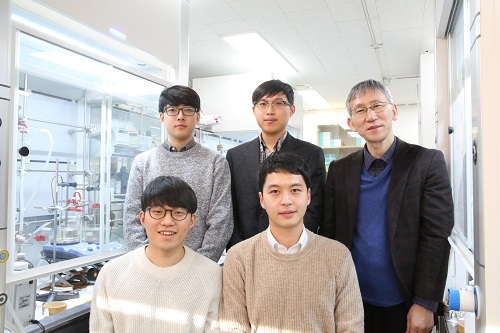Gamma-lactams have been long-treasured molecules in the medical and chemical industries, as they are used as raw materials for numerous medical products and chemical materials. A joint research team led by Professor Sukbok Chang and Professor Mu-hyun Baik from the Department of Chemistry achieved a breakthrough — coming up with a new strategy for synthesizing this ring-shaped molecule from readily available hydrocarbons in nature.
Although hydrocarbons are abundant in nature, their limitation in being used as starting materials lay in the difficulty of converting them into nitrogen-containing compounds. In the synthesis of gamma-lactam, an intermediate in the pathway — carbonyl nitrene — presented a major obstacle since it rapidly broke down into undesirable products.
The research team utilized computer models to block the unwanted reaction pathways, enabling the synthesis of gamma-lactams from relatively simple raw materials. Computer simulations played a critical role as they enabled calculations of energy required for different reaction mechanisms to occur; as a result, the team predicted three possible pathways, of which only one led to the production of the desired gamma-lactam. Supported by these simulations and experimental observations, the team developed an iridium catalyst with high reaction efficiency — successfully guiding the mechanism to produce the target product. In fact, Professor Baik commented on the implication of this research in demonstrating the importance of “mechanism-based reaction development”.
What furthers the implication of the work is that the results of the work are not limited to hydrocarbons, as the study also converted different molecules like steroids and amino acids into gamma-lactams. This opens up a new path of potential applications, ranging from anti-aging agents to increased efficiency of drug development. Since gamma lactams are key components in numerous fields like synthetic chemistry, material chemistry, and medicine, branches of new breakthroughs are anticipated to follow. The results of this joint study were published in Science on March 2.


